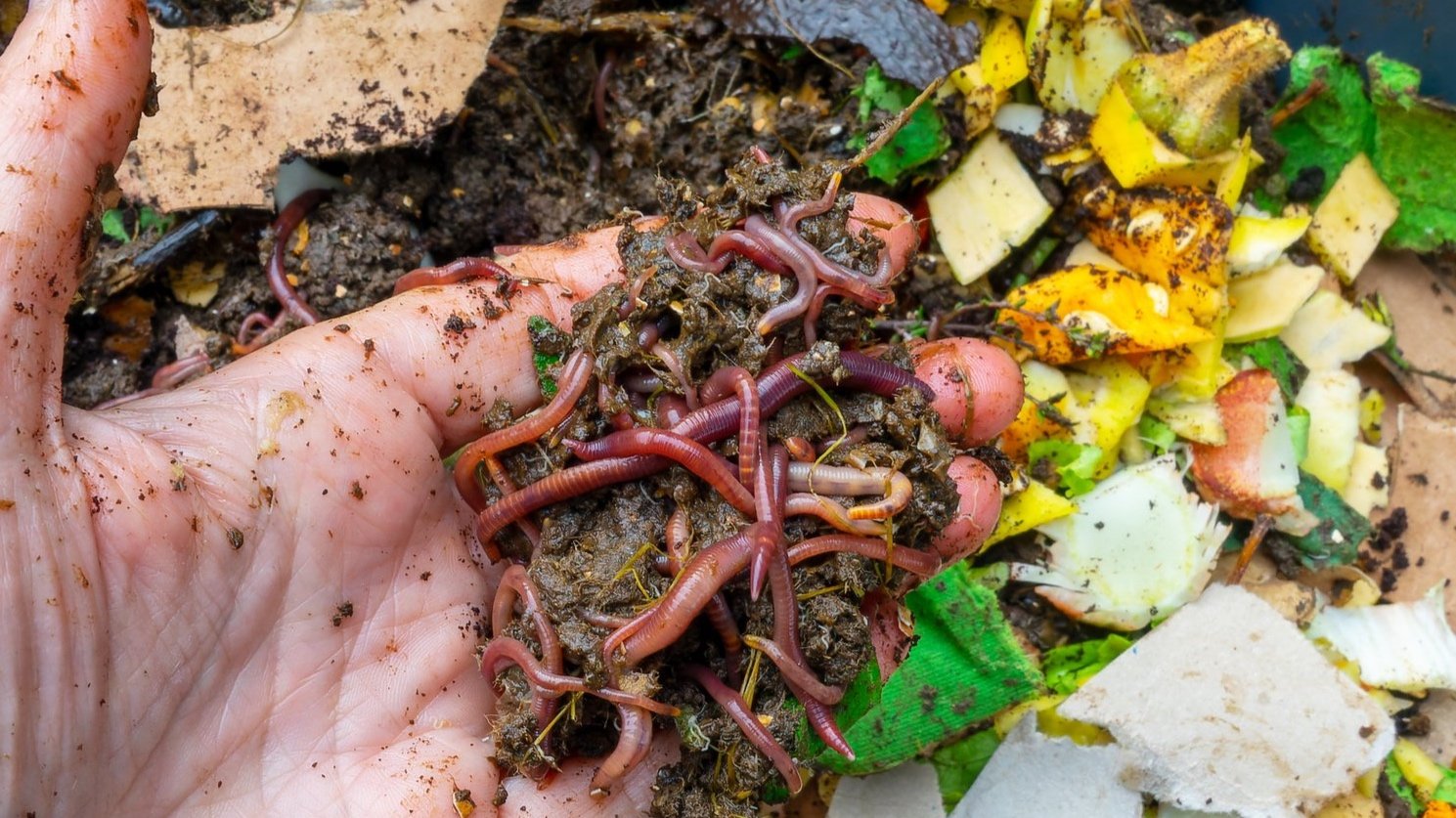Why Red Wiggler Composting is the Best Choice for Eco-Friendly Horticulture
Why Red Wiggler Composting is the Best Choice for Eco-Friendly Horticulture
Blog Article
Discovering the Mechanisms of Red Wiggler Composting: A Comprehensive Guide to the Refine and Its Positive Effect On Lasting Gardening Practices
The detailed devices of red wiggler composting, using the special physiology of Eisenia fetida, offer an engaging opportunity for enhancing sustainable horticulture methods. As urban gardening gains traction, recognizing the nuances of this composting approach ends up being increasingly appropriate.
Comprehending Red Wigglers
Red wigglers, medically known as Eisenia fetida, are a types of earthworm highly regarded for their performance in composting natural waste. These worms prosper in nutrient-rich settings, especially in rotting raw material, making them suitable for vermicomposting systems - Red Wiggler Composting. Characterized by their reddish-brown pigmentation and segmented bodies, red wigglers are smaller sized than usual earthworms, generally gauging in between three to 4 inches in size
Their unique physiological attributes improve their composting capacities; for instance, they possess a high reproductive price, allowing populaces to increase quickly under suitable conditions. Red wigglers eat natural material, simplifying with their digestion systems, which results in nutrient-rich spreadings that function as an exceptional natural plant food. Their starved hunger enables them to refine big volumes of food waste successfully, dramatically lowering landfill payments.
Along with their composting prowess, red wigglers play an important duty in soil health and wellness. Red Wiggler Composting. They freshen the dirt and facilitate the decay of natural matter, further improving the dirt ecosystem. Recognizing the qualities and environmental benefits of red wigglers is necessary for anybody aiming to apply lasting horticulture methods with reliable composting approaches
The Composting Process
The composting process entails damaging down organic materials right into nutrient-rich compost, a job that red wigglers excel at as a result of their specialized digestive systems. These worms eat food scraps, yard waste, and other raw material, transforming them into valuable garden compost through a collection of chemical and organic processes.
At first, the organic matter is combined with bed linens products such as shredded paper or dried fallen leaves, developing an optimum atmosphere for the worms. As the red wigglers consume this combination, they simplify with their gut, where microorganisms further disintegrate the material. This procedure creates warm, promoting microbial activity, which increases decomposition.

Advantages of Red Wiggler Composting
Lots of gardeners and eco-conscious people recognize the countless benefits of red wiggler composting, making it a prominent selection for efficient waste monitoring. One of the main benefits is its ability to considerably lower natural waste in landfills - Red Wiggler Composting. Red wigglers successfully break down kitchen area scraps and other eco-friendly products, transforming them right into nutrient-rich vermicompost that enriches dirt health and wellness
Additionally, red wiggler composting improves soil structure and fertility. The resulting vermicompost is bristling with advantageous bacteria, which promote plant growth and enhance nutrient retention. This all-natural fertilizer not just supports sustainable horticulture practices but additionally reduces reliance on chemical fertilizers, promoting a healthier environment.
In addition, red wiggler composting is a space-efficient approach, making it optimal for city gardeners with minimal room. The process can be conducted inside or outdoors, allowing for year-round composting despite climate problems. In addition, red wigglers are low-maintenance organisms that call for marginal care, making them obtainable for novice garden enthusiasts.
Essentially, the advantages of red wiggler composting expand past waste reduction; they add to healthier dirts, my blog sustainable gardening techniques, and ecological stewardship, positioning it as a useful practice in modern-day gardening.
Ideal Practices for Composting
For successful red wiggler composting, sticking to best methods is necessary to optimize performance and make sure an efficient atmosphere for these worms. This equilibrium promotes optimal decay and enhances the worms' health and wellness.
Next, display moisture levels, going for a damp, sponge-like uniformity. Overly wet conditions can bring about anaerobic decay, while extreme dryness might impede worm task. Furthermore, ensure proper oygenation by transforming the compost routinely, which helps prevent compaction and permits appropriate oxygen circulation.
Temperature level is another important variable. Maintain a series of 55 ° F to 77 ° F(13 ° C to 25 ° C) to promote worm task and microbial growth. Ultimately, stay clear of presenting meat, dairy products, and oily foods, as these can bring in parasites and develop odors.
Enhancing Sustainable Gardening
Sustainable gardening symbolizes an alternative strategy that integrates environmental concepts with sensible horticulture strategies. By including approaches such as red wiggler composting, garden enthusiasts can substantially boost their techniques, cultivating a more resistant environment. Red wigglers, renowned for their effective decomposition capacities, transform organic waste into nutrient-rich compost, therefore enriching the dirt without depending on chemical fertilizers.
Applying sustainable gardening techniques, such as crop turning, companion growing, and mulching, further complements the benefits of composting. These practices not only boost dirt structure and fertility yet also promote biodiversity, bring in valuable bugs and microorganisms that contribute to grow wellness. Using indigenous plants can lower water consumption and decrease upkeep, aligning with important site water conservation initiatives.

Conclusion
In conclusion, red wiggler composting represents an essential technique for enhancing lasting gardening techniques. Ultimately, the adoption of red wiggler composting can dramatically add to eco-friendly gardening, benefitting both city and newbie garden enthusiasts in their growing initiatives.
The elaborate devices of red wiggler composting, making use of the special physiology of Eisenia fetida, offer a compelling additional info method for enhancing lasting gardening practices. Recognizing the characteristics and eco-friendly benefits of red wigglers is crucial for anybody looking to carry out sustainable gardening practices via efficient composting methods.

In conclusion, red wiggler composting represents a vital method for boosting sustainable horticulture methods. Eventually, the adoption of red wiggler composting can substantially contribute to eco-friendly horticulture, profiting both metropolitan and amateur garden enthusiasts in their cultivation efforts.
Report this page